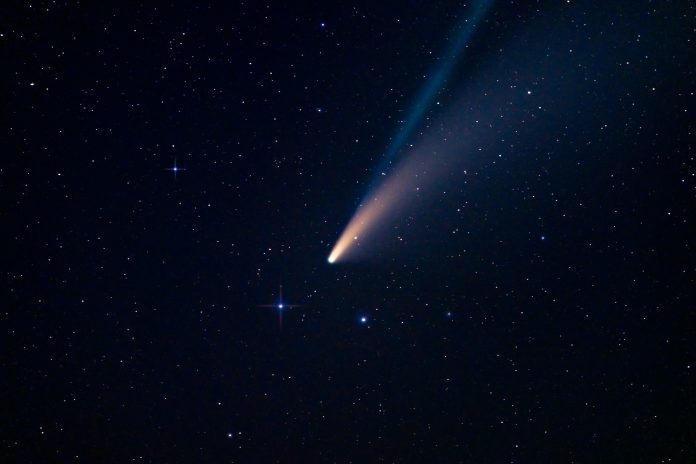Oumuamua (oh-moo-ah-moo-ah)
Imagine that you wake one night to witness a strange vehicle racing past your house. Before you can get a good look at it, the object vanishes into the darkness.
On October 19, 2017, Robert Weryk, an astronomer at the University of Hawaii, observed just such an entity. Working backwards to plot its bizarre trajectory, Weryk eventually identified it as the first interstellar object ever discovered, meaning it originated from somewhere beyond our solar system.
By the time Oumuamua (Hawaiian for ‘messenger from afar’) was spotted, it was already on its way out of town, having made a hard left at the Sun 40 days earlier. This only allowed astronomers a scant 11 days to study this otherworldly visitor before it faded from view.
What we know about Oumuamua:
- It was the weirdest object ever seen in our solar system.
- It came from the direction of constellation Lyra and is now headed toward constellation Pegasus.
- Despite being only a pinpoint of light in the Hubble telescope, NASA felt it had a 400 x 40 metre cigar shape that grew brighter then dimmer, indicating a tumbling rotation. Other scientists favoured a shiny pancake profile.
- SETI (Search for Extra Terrestrial Intelligence) detected no unusual radio emissions.
- It was originally categorized as a comet, but as it lacked a tail, was reclassified as an asteroid.
- It sped up to 315,800 km/hr as it approached the Sun then continued to briefly accelerate afterwards. While an asteroid can’t do this, a comet can, but because of the missing tail, Oumuamua was re-reclassified in 2018 as neither a comet nor an asteroid.
- A controversial Harvard astronomer proclaimed that it may have been a spacecraft with a lightsail that utilized the Sun’s radiation pressure to propel it forward.
- Whatever it was, Oumuamua is long gone and will not pass our way again.











